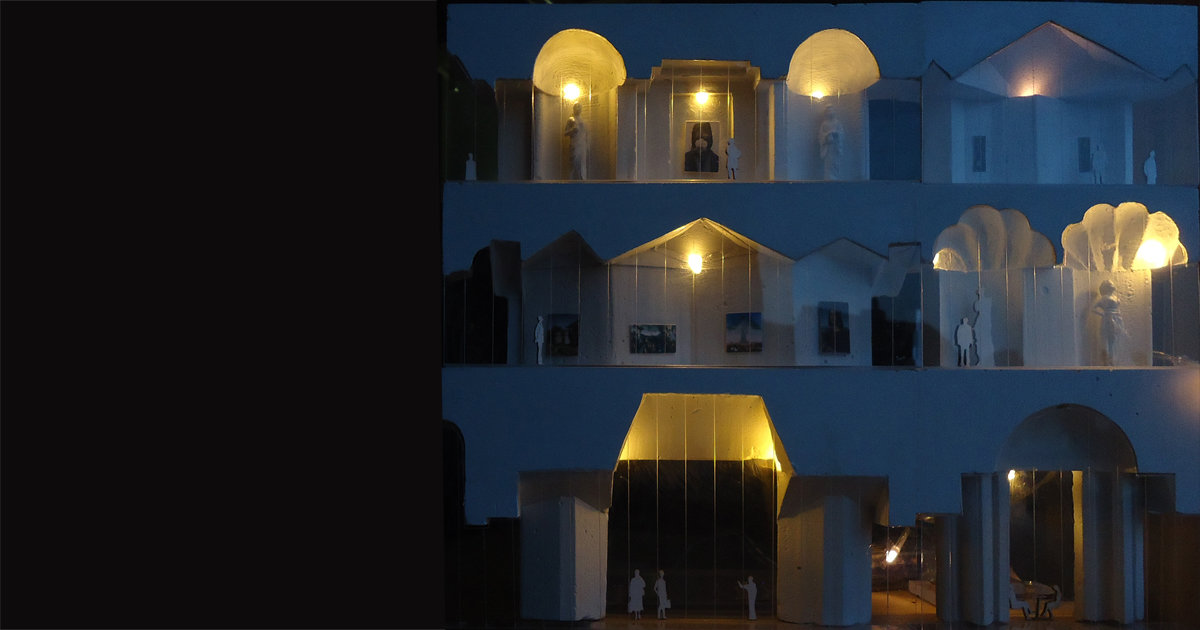
'The project 'Art in Context' is focused around context of a different nature - it is about the architecture that creates it.
Nowadays the importance of museums in public life has increased with their ability to regenerate urban centers. Architects are commissioned to create iconic objects that become symbols of the cities they are built in. Contemporary museum buildings are places where commerce, creativity and culture are blurred. The victim of this development is the art piece and spectator. Therefore I propose something rich in form, absorbing during exploration, flexible in arrangement, yet with strongly identity that it will tempt the visitor to walk inside.
A museum that delivers necessary conditions for the artworks to live and to be able to provide individual experience to the spectator - the design describes the optimal spatial conditions to house and truly experience the art collection that is diverse, both in timeframe as in type. Fundamental to this approach is my deep conviction that art is inseparable from its context - the set of conditions originally meant for it.
These thoughts based on a hundred-year-old book of a Russian philosopher became my inspiration already years ago. Testing and visualizing this theory I found the 'art & context' problem constantly valid and crucial in maintaining our culture. Working solely in plaster I translated these conditions into generic types of massive yet hallowed spaces that together create a dense network of exhibition possibilities.
Art in Context
The graduation project ‘Art in Context’ relates to a design for a museum in Budapest, made up of two museums with a very broad – in a historical and thematical sense – collection. The committee is impressed by the sheer wealth of meanings and spatial experience which are typical to the design. And just as convincing is the way with which the enormous program is being organized: a patchwork of spaces which are opened up by diagonal patterns of routing, creating both interesting overviews and wandering spaces, and held together by a gradual shift from enclosed to open spaces.
At the same time, the project composes – by its design - a consistent and convincingly elaborated critique on the contemporary museum architecture. Departing from the proposition that specific art demands a specific spatial context, the designer searches for and finds a rich pallet board of spatial typologies that is able to spatially accommodate different types of art in the best possible way. In doing so a new museum typology appears that puts specific spatial articulation on the agenda. This new museum typology can be reconquered by the exhibition planners and curators.
Appreciated to the fullest is the way with which both ‘sides’ of the project are joint together in the design process that is completely composed and organized by the making of a continuous deluge of (plaster cast) spatial models, with which the spatial qualities of the different exhibitions rooms are explored profoundly.